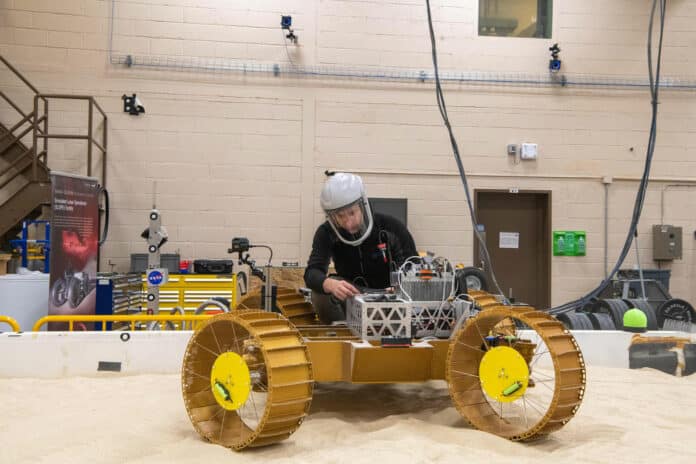NASA’s second Artemis mission remains on track to send four astronauts around the Moon in late 2024. The Volatiles Investigating Polar Exploration Rover (VIPER), a cornerstone of NASA’s ambitious Artemis program, is set to revolutionize lunar exploration with its landing on the Moon’s Mons Mouton. The project will also showcase the potential of AI in space exploration.
The VIPER team has now released an update on its quest to construct the lunar rover. The team is currently in the middle of building the flight vehicle, which will carry four science instruments to study the lunar volatiles.
NASA is providing enthusiasts with an interactive behind-the-scenes look and insights from the project’s experts through various livestreams throughout the process.
VIPER Systems Integration and Test team have already received payloads from all the science instruments. The team will install them into the actual flight rover; all but one is already installed. This is a significant accomplishment, as many flight projects face frequent delays at this stage.
In addition to this, most of the critical hardware components have been successfully delivered from various external vendors, marking another critical milestone. It was a challenging task to acquire these components due to pandemic-related supply chain issues that have affected the industry. However, VIPER has finally crossed this hurdle and can now focus on integrating all the pieces and parts into a fully functional rover.
“So now that we are building the flight article, we are able to see precisely how well our design plans are working in reality,” wrote Dan Andrews, VIPER Project Manager, in a press release.
The VIPER team encountered some challenges in the first half of the rover build, such as connector issues from vendors, where they identified and fixed some design and Foreign Object Debris problems, which affected the reliability of the connectors.
They also found some unexpected performance characteristics from some vendor hardware, which they have incorporated into their plans for how they operate VIPER. These issues and solutions are part of the complex process of building a flight article and ensuring it can withstand the very harsh environment of launch, landing, and operations on the lunar surface.
Once the team completes the flight rover assembly, the next step will be to test that rover in the kinds of environments it will see on the mission. This activity will be the primary focus in 2024 and will be the final step before delivering VIPER for launch integration. Testing the rover in various environments will be crucial to ensure its success on the mission.
